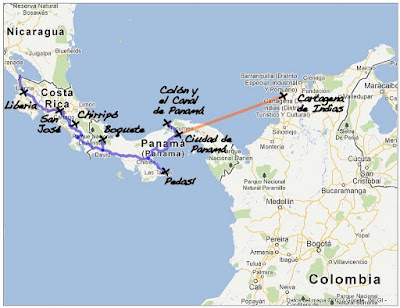Unlike Cartagena, this name is not attractive. I'd rather say “was not”. Indeed the times of Pablo Escobar and the Medellin cartel are far away. End of 1993, the murder of the drug baron brings peace and security in the city. Other cartels, such as the one of Cali, will be dismantled in the 1990s. Also, contrary to prejudices, the city as well as the rest of Colombia have gained a lot in terms of security. And the start of negotiations with the FARC (scheduled for October) even brings a wind of hope.
Between the Western and Central Cordilleras, Medellín (1,600 m) lies along a valley, the one of Rio Medellín. Known as the city of eternal spring, Medellín has a particularly pleasant climate: 25°C throughout the year with fresh air due to altitude. Surrounded by mountains, visible wherever you are in the city or in the suburbs, we forget that we are also surrounded by 3.5 million people. I was lucky enough to be hosted by Manuel, Alejo and Alex who live in the hills: great view of the city!
The city itself does not have much interest, post-aesthetic architecture worthy of the 1960s. But the surrounding areas, all in red brick, give a better picture of this megalopolis, especially when seen from the aerial tramway. I admit that it's funny to take these gondola lift in the midst of building or surrounded by greenery, while I am more used to take it to go skiing. Finally Arvi Park on the other side of the mountain is the perfect place for hiking.
In addition to sharing the lives of Manuel, Alejo and Alex, I had the opportunity to follow Manuel in his work. He is a journalist and director of the Emisora La Esquina, a community radio station. I followed him on the cover of Medellín Book Fair, at a street party organised for the defence of children's rights and I discovered behind the scenes of a radio broadcast. Almost excited to arrive in this city with such an history, I left behind me a city I enjoyed the environment and open-mindedness.



